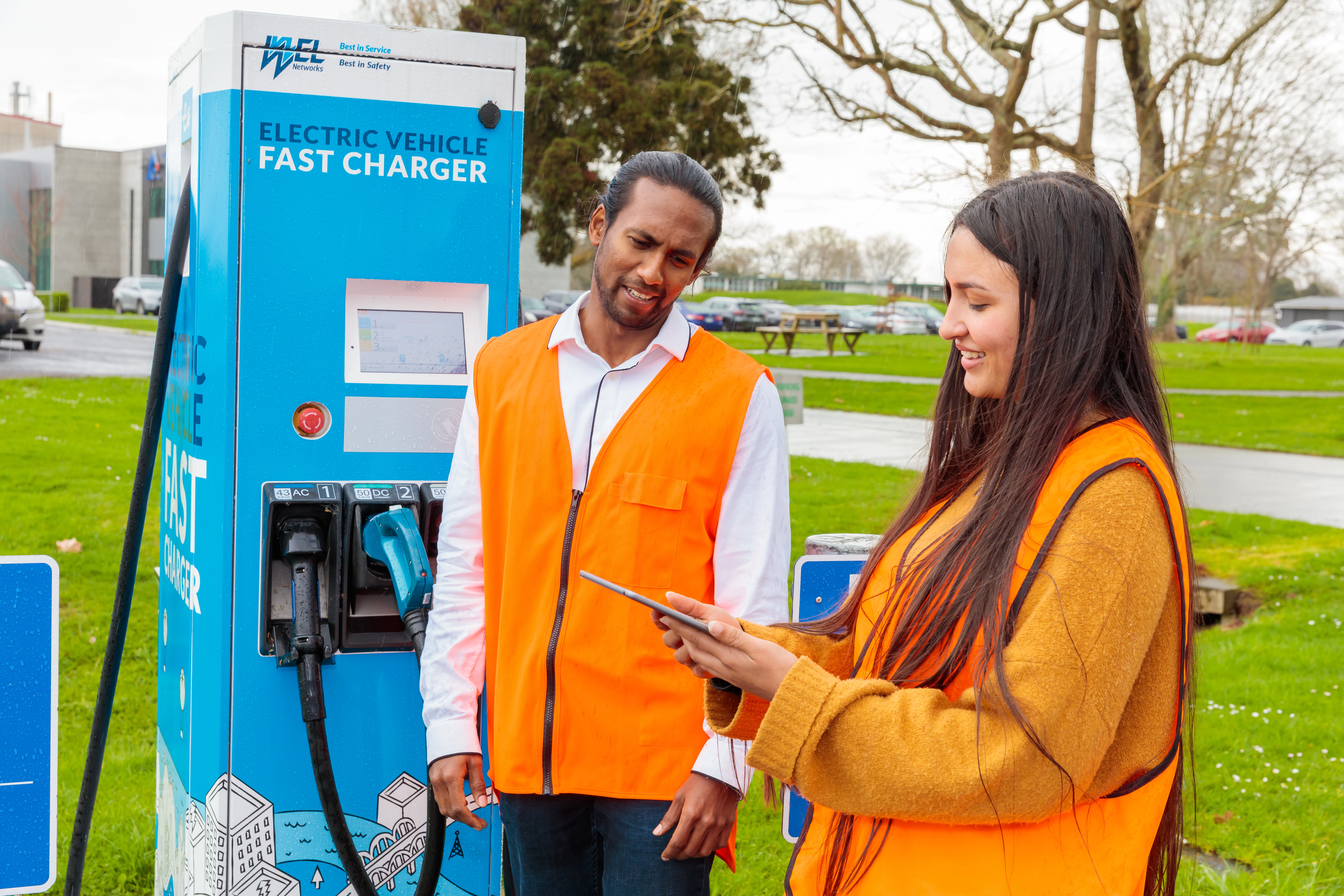Electrical and Electronic Engineering

Why study Electrical and Electronic Engineering?
Electrical and Electronic Engineering at Waikato is a uniquely future-focused integration of computer science involving software programming, data management, artificial intelligence and cyber-security with core electrical and electronic principles in modern power systems, electronic design, embedded systems and communication.
As a graduate specialising in Electrical and Electronic Engineering you will be ready to contribute to the electricity industry evolution from legacy generation and distribution models into an immediate future of distributed generation and storage, smart grids and new generation paradigms around renewable resources. These trends impact not just the traditional electricity industry itself, but also generate new opportunities and requirements within agriculture, manufacturing, construction, transport electrification and automation and smart building management.
Work placements completed as part of this programme provides opportunity for practical experience and robust electrical engineering and design skill development in relevant industries.
You'll work on major research design projects, creating products with commercial applications, which are then showcased at our annual Engineering Design Show. Importantly, there is also a focus on developing well-honed communication skills that are such a vital part of the profession.
Career Opportunities
- Computer Systems Engineer
- Control Systems Engineer
- Design Engineer
- Electrical and electronic engineer
- Instrumentation Engineer
- Network Engineer
- Power Systems Engineer
- Systems developer
Hamilton, Tauranga
Study Electrical and Electronic Engineering in these qualifications
Accreditation
The Electrical and Electronic Engineering programme has provisional accreditation under the Washington Accord and will be eligible for full accreditation in 2025.
Practical experience
Work placements are a major feature of the Electrical and Electronic Engineering programme and you will complete 800 hours of relevant work experience during your degree.
Our Work-Integrated Learning team actively seeks and oversees your work placement, ensuring a good fit for your area of study and career goals, and supporting you throughout your work experience.
By the time you graduate you will have the credibility of paid experience to take with you as you start your career.
Facilities
The electronics laboratories at the University of Waikato feature the latest equipment and are supplied with a wide selection of modern components and powerful software. Classes are run in an environment just like that found in contemporary electronics companies. Engineering students have access to the latest equipment including vector impedance and spectrum analysers, precision meters, fast oscilloscopes, semiconductor analysers, lightning and surge simulators, distortion analysers, complex signal sources, a range of special-purpose measuring equipment, a mechanical workshop and high-power computing facilities.
Build a successful career
As an Electrical and Electronic Engineering graduate you could work in a range of exciting fields including aerospace, transport electrification and automation, smart building management, livestock management, renewable energy (wind, solar, geo), electronic mapping, data communications, satellite systems, vehicle companies, hospitals, and the military.
Scholarships and prizes
Visit our Scholarship Finder for information about possible scholarships.